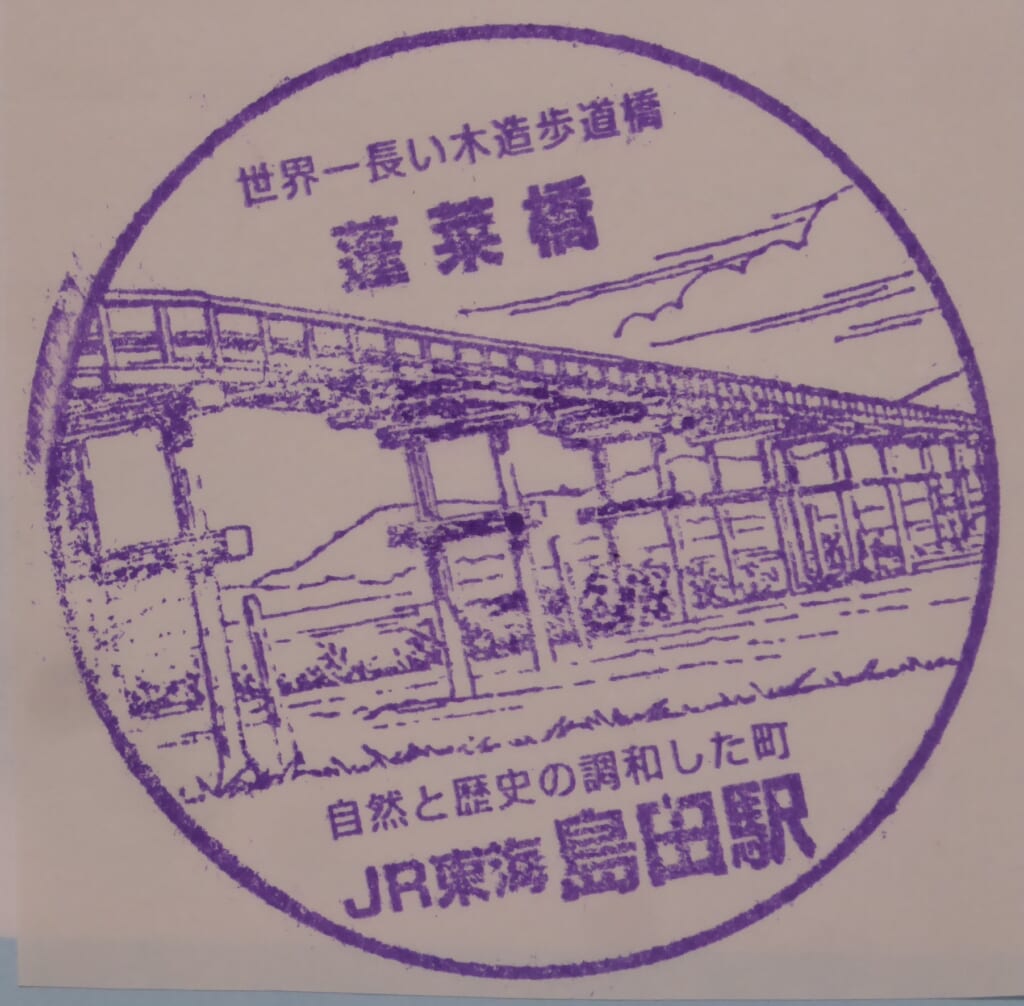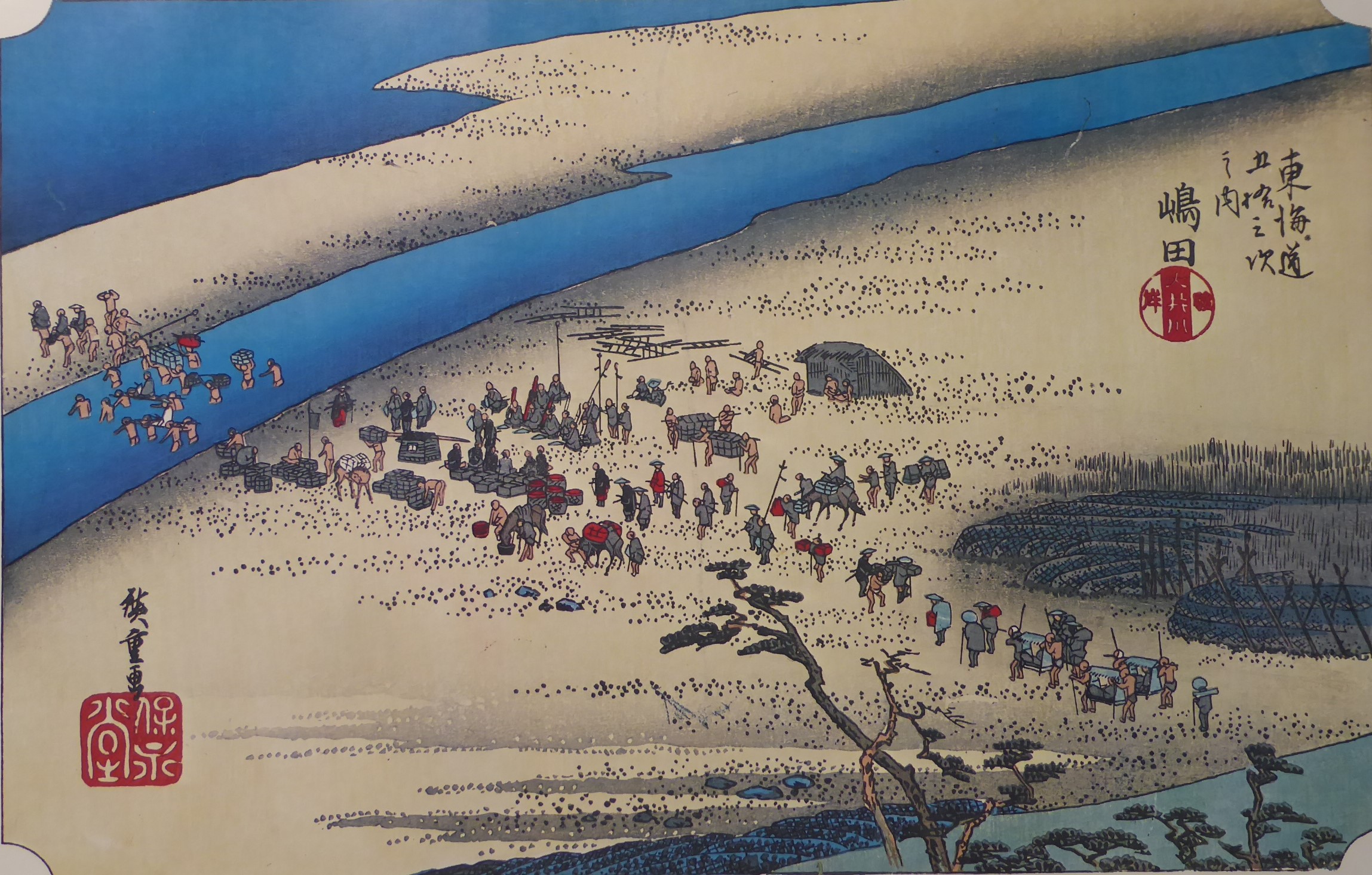Explanation of the Fifty-three Stations of the Tokaido 24 Shimada
From Kanaya to Shimada, 3.9km, 34°49’58″N, 138°10’33″E
Shimada is the 23rd station on the Fifty-three Stations of the Tokaido.
Currently Shimada City, Shizuoka Prefecture.
Shimada has 3 main inns, 0 side inns, 48 lodgings, and a population of 6,727.
“Even a horse can cross the Hakone 8 ri, but the Oi River is impossible to cross.”
It is one of the difficult spots on the Tokaido.
The former river crossing station is a national historic site, known as the Shimada Oi River Kawagoe Ruins.
It developed as a collection point for lumber cut from the upper reaches of the Oi River.
During the Genroku period, a canal was dug, and lumber was transported from Wadaminato (the southern part of the current Yaizu fishing port) to Edo via the Tochiyama River and Kiya River.
Because it is located on the left bank of the Oi River (Edo side), when the river was flooded and travelers heading from Edo to Kyoto for pilgrimages to Ise Shrine were prohibited from crossing the river, the area was bustling like Edo.
It was not uncommon for people to use up all their money on lodging and entertainment due to long periods of rain.
For this reason, when they ran out of money or the inns were full, they rented a house.
As a vestige of this, there is a place called Okariya along the old Tokaido road in Shimada.
The Shimada-juku Oigawa Kawagoe Ruins is a nationally designated historic site in Shimada City, Shizuoka Prefecture.
The historic site includes 20 facilities, including the Kawakaisho, as well as the roads with facilities.
As the Oigawa was a key point in the defense of Edo, ferries and bridges were prohibited on the various roads, and a “crossing system” was implemented.
The Kawagoe system and Kawakaisho were established in the early Edo period when the system of post-post horse-drawn carriages was established and roads were developed.
There were few bridges over large rivers, so travelers had no choice but to cross by boat or on foot.
Ferries were prohibited on the Oi River in particular, and the rapid current made it dangerous for inexperienced travelers to cross.
People appeared on both banks whose job it was to help travelers cross the river.
As the volume of traffic on the highway increased, it became necessary to standardize the methods and fees for crossing, and in 1696 the Kawagoe System was established.
To manage this, the position of River Village Headman and the River Meeting Place were established as the base of operations.
The first River Village Headmen were Hashizume Sukezaemon and Tsukamoto Magobe, who were appointed by Shimada magistrate Noda Saburozaemon.
The River Meeting Place had duties such as annual events, waiting for the river and Kawagoe Kogashira under the River Village Headman.
The River Meeting Place measured the water depth for the day and determined the Kawagoe toll.
The duties included allocating crossing times for passersby, from feudal lords to commoners, and distributing various baggage.
Crossing the river continued until the Meiji Restoration.
In 1870, the Kawagoe laborers were abolished and ferries began operating.
In 1875, a temporary wooden bridge was erected. The temporary wooden bridge was often washed away by floodwaters.
In April 1883, the permanent wooden bridge was completed.
In October 1895, the wooden bridge was washed away by floodwaters and ferries resumed.
In March 1928, the iron bridge was completed.
The current Kawakaisho building was built in 1856.
After the abolition of the river crossing system, the building was used for various purposes, such as an office for the Oigawa ferry and a school building, and its location changed frequently.
In August 1966, the Shimada-juku Oigawa Kawagoe ruins were designated by the government and moved to its current location in August 1970.
The longest wooden pedestrian bridge in the world is the Horai Bridge.
Horaibashi Bridge over the Oi River is a nostalgic wooden footbridge with a total length of 897.4m and a width of 2.4m.
In 1997, it was recognized by the Guinness Book of World Records as the “longest wooden footbridge in the world.”
It is one of the few toll bridges today, and you must pay a toll to the bridge guard at the foot of the bridge before crossing.
250-300 people visit the bridge every day, which amounts to more than 100,000 people per year.
① “Hoeido version”
A large group of travelers is resting on the riverbank as they prepare to cross the river.
It is a lively scene of people dividing their luggage, loading it onto their horses, and carrying it.
Ferrying across the Oi River is the most difficult part of the Tokaido road.
The river is 1,300m wide and deep, so if it floods during the rainy season, people will be stuck at Shimada-juku for a long time.
It is drawn with a bird’s-eye view from a fairly high vantage point.
② “Gyousyo version”
A traveler who has just crossed the river and a traveler who is about to cross are depicted on a bridge.
The bridge connects the shore and the sandbar.
A white Mt. Fuji is depicted in the distance.
③ “Reisho version”
A depiction of a ferry crossing from the direction of Kanaya.
The Hiroshige blue is beautiful.
A white Mt. Fuji is depicted in the distance.
④ “Hokusai version”
A laborer who has just crossed the river is taking a break to warm himself.
The traveler on the left appears to be negotiating.
⑤ “Travel image”
JR Shimada Station.
⑥ “Stamp image”
A stamp from JR Shimada Station.
The Horai Bridge is depicted.
Hoeido version
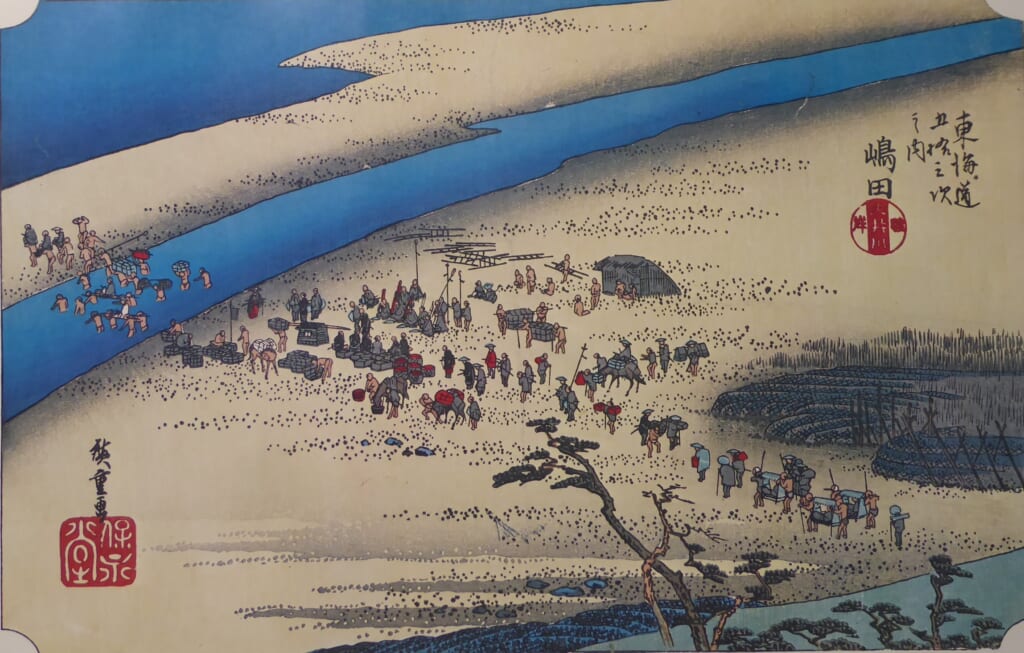
Gyousyo version
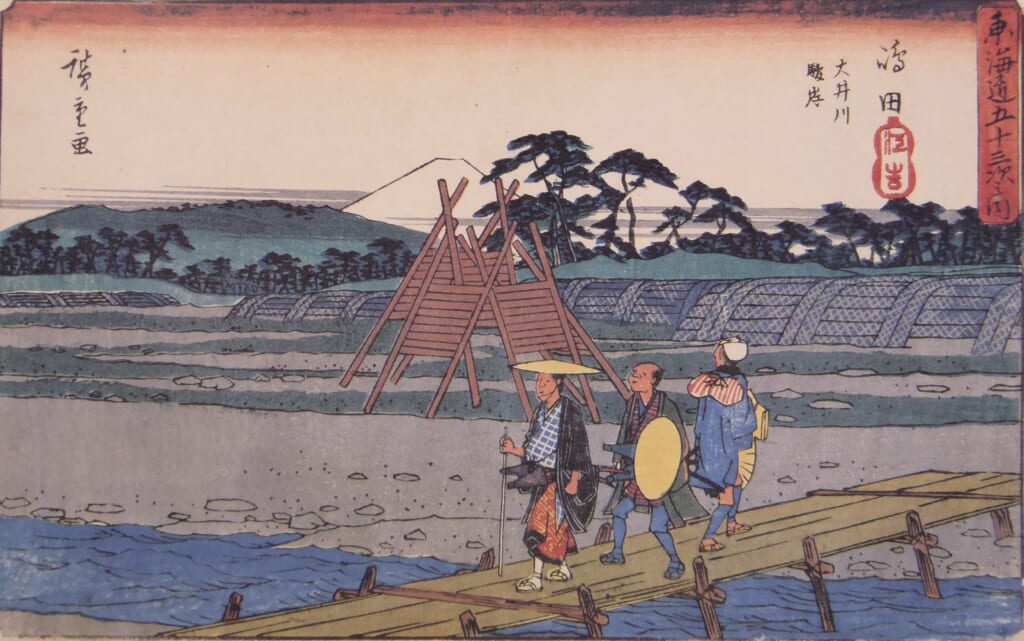
Reisho version
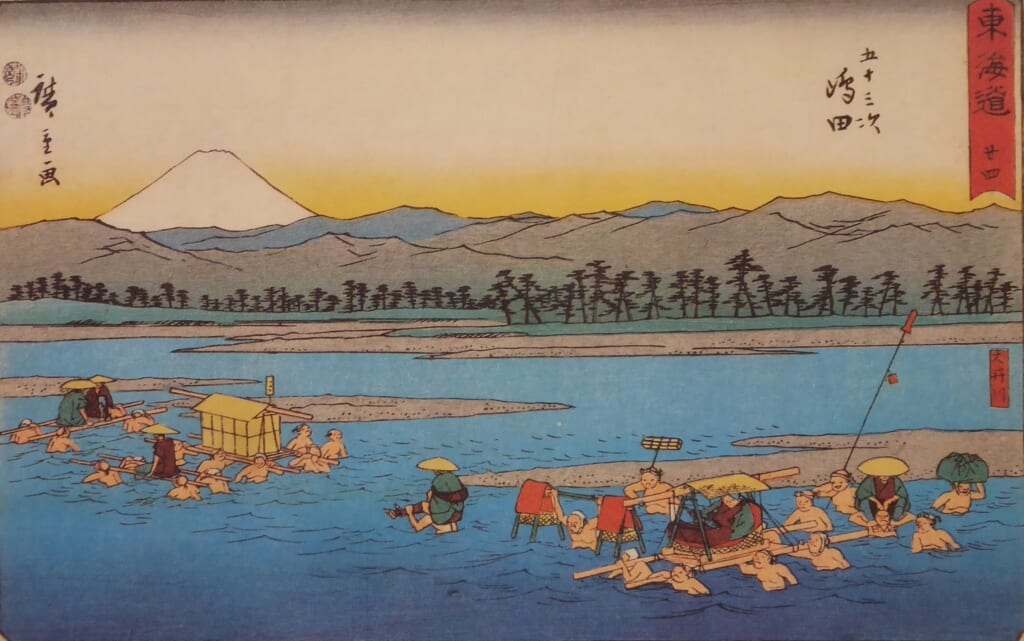
Hokusai version

Travel image
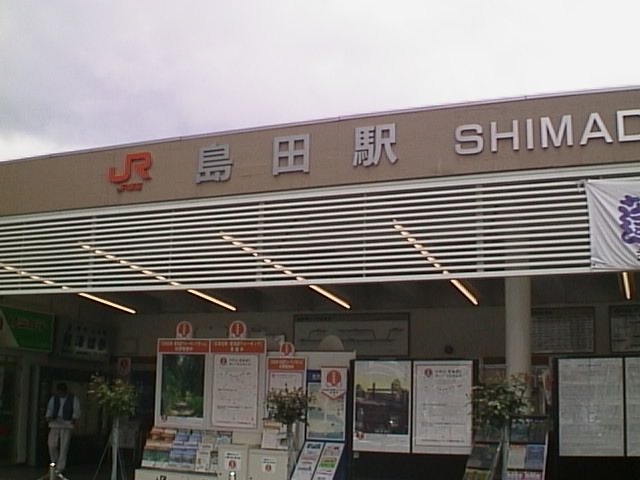
Stamp image
